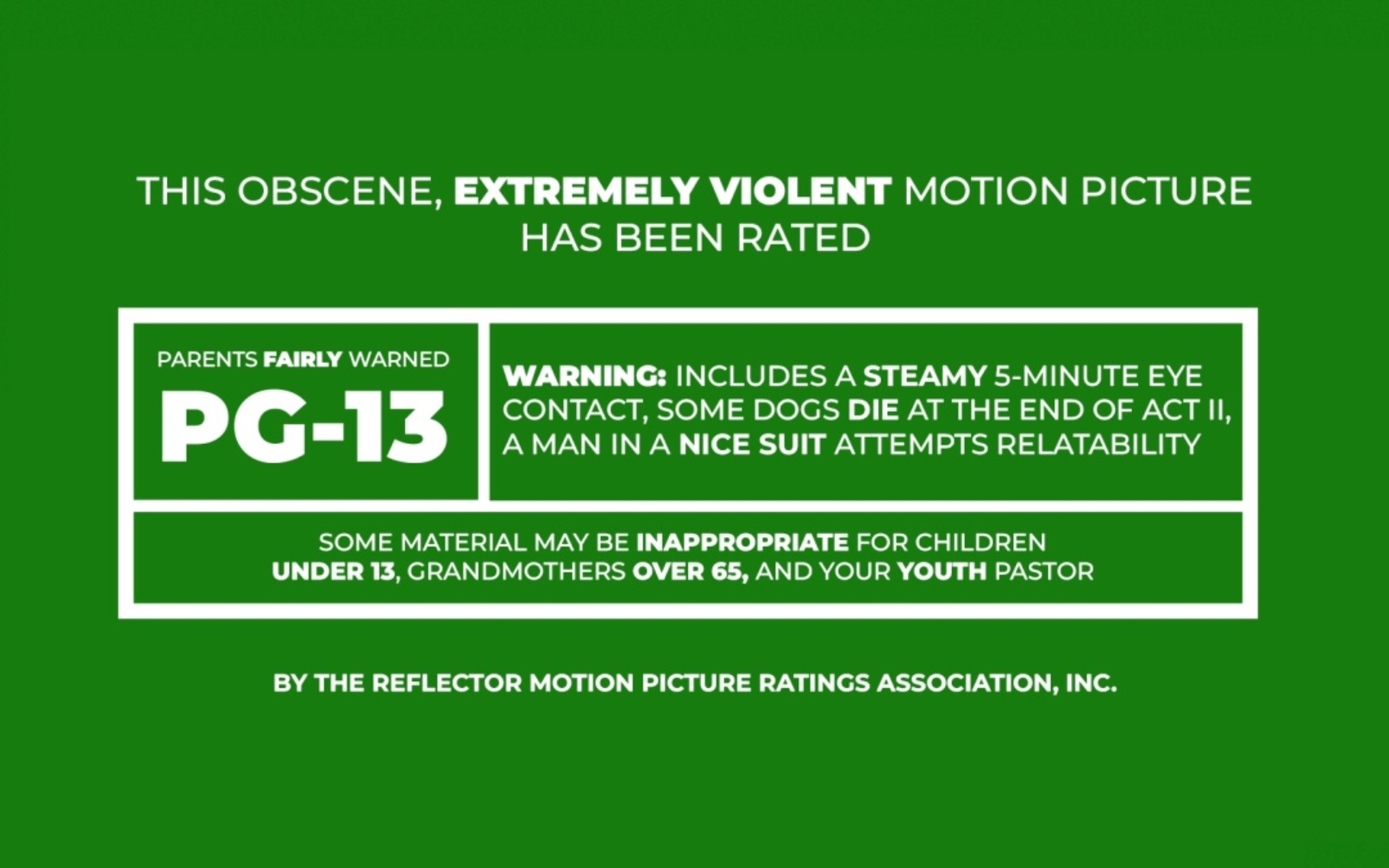



OCT 24, 2025
The Current State Of The Film Ratings System
The Current State Of The Film Ratings System
Film ratings mean different things to different people. For concerned parents, it means researching the films before they send their impressionable children to it. For the impressionable children, it may mean buying a ticket to a PG movie and going to the R-rated movie they had intended to see before their parents told them not to. Some may scoff, but film ratings do provide a valuable resource to audiences. They warn people about subject matter that may be offensive to their beliefs, provide trigger warnings, and help set age-restriction policies that protect theaters. Although this is a great resource, it does not come without inconsistency. Ratings have had noticeable changes throughout time, and they are much stricter now than they were 40 years ago. To understand how the rating system works, we will need to take a closer look at the history of film ratings.
The film rating system began with the Hays Code in 1922. Named after Will H. Hays, the first president of the Motion Picture Producers and Distributors of America (MPPDA), the Hays Code reflected his strict Presbyterian views. Some divisive rules aimed to preserve Catholic and family values, discourage sympathy for criminals, and prohibit the depiction of interracial relationships and other then-contemporary taboos. At one point, the Hays Code even banned films that depicted Nazis negatively from U.S. distribution, a policy later reversed when the government commissioned anti-Nazi war films. While now considered outdated, the Hays Code was credited with "saving" Hollywood’s reputation at a time when the industry was viewed as disreputable.
In 1948, the Supreme Court ended studio ownership of movie theaters, weakening the MPPDA’s control. This allowed independent theaters to show films not approved by the Hays Code, such as foreign and independent movies. Another blow came in 1952, when the Supreme Court ruled that films were an art form protected by the First Amendment, and therefore could not be censored. The MPPDA subsequently abandoned the Hays Code and became the Motion Picture Association of America (MPAA). In 1968, MPAA president Jack Valenti introduced the G, M, R, and X rating system to move away from Hays Code censorship, especially in light of the civil rights movement. These ratings stood for General Audiences, Mature, Restricted, and X-rated. The system changed when the Mature rating became GP (General audiences, Parental guidance suggested) in 1971 and was finalized as PG (Parental Guidance) in 1972.
Have you ever watched a PG movie from the 80s and been shocked at the content that was allowed? People back in the 80s were, too. Many parents demanded a middle rating between PG and R, but this wasn’t considered by the MPAA until Indiana Jones: The Temple of Doom came out in 1984. Parents everywhere were outraged at the sacrificial scene in Temple of Doom where Mola Ram pulls a beating heart out of a live human. Granted, this was quite a graphic scene for a PG movie, but since there was no distinction under R, the film in its entirety was not graphic enough for an R rating. Another film Spielberg was invovled with, Gremlins, generated the same outcry from parents after the gremlins died in just about graphic way you could imagine. Speilburg said in an MPAA video, “It was sort of a perfect storm of movies that I either produced and directed. It all sort of came together and created this parental objection…and I agree with that, but I also felt it would’ve been unfair to have labeled either of those films [Temple and Gremlins] R. I called Jack Valenti and I said, ‘Let’s get a rating somewhere in between PG and R.’ Jack was proactive about it, completely agreed, and before I knew it there was a PG-13 rating.” It was then that Jack Valenti and Steven Spielberg created the PG-13 rating. Exhibitors were not pleased with this addition, citing that 13-year-olds have no way of verifying their age, as many do not have government-issued IDs. Red Dawn was the first film to be released with the PG-13 rating, and PG-13 has been used ever since. The most recent change was in 1990, when the X rating was changed to NC-17 to avoid being associated with pornography.
Today, many film enthusiasts are calling for revisions in the factors that determine a film is rated R. For example, Mugen Train from the Demon Slayer series was rated R in the US, but rated PG12 in Japan. Many, including myself, disagree with the rating set by the MPAA. In Japan, Demon Slayer is regarded as a young adult TV show, created for the target audience of children aged 12-18. “It’s a little silly that the target audience for this movie won’t be able to view it without their parents coming along,” an American viewer named Amanda told Vice. Another contested rating factor is the amount of F-bombs allowed in PG-13 films. PG-13 films are only allowed one F-bomb; two in a film automatically receive an R rating. A quote from film critic Chris Klimek says, “ No body count alone will ever earn a film an R rating, yet a second occurance of the word “f**k” earns a Restricted label faster than you can say Hays Code.” Although these rating factors may seem trivial to the audience, these rating discrepancies can cost a theater an entire group of audience members, decreasing ticket sales and hurting the theater’s and studio’s profits. The PG-13 label maximizes profits, so many filmmakers are forced to cut scenes that are vital to the storyline to fit the cloudy parameters of the PG-13 rating. From the MPAA’s view, rating factors are meant to change with societal norms, but with the age of social media, it is increasingly difficult to pin down a common consensus around what is acceptable for young adult films.
Film ratings have varying levels of importance to all movie-goers, but all can agree that they are not perfect. It is difficult to pin down what is offensive to a mass group of people because each individual is unique and has different triggers. As always, we would love to hear your input on this topic. Please reach out and tell us your opinions on the current rating systems!

